In this article, I will discuss what Anthurium roots above the soil are. The roots seen above the soil are air roots or aerial roots. The Flamingo flower produces roots above the soil and below the soil.
The roots below the soil are just regular roots. They’re also called soil roots. If you are growing a plant or a plant cutting in water, it produces water roots.
Water roots are different from soil roots. Soil roots are white and are engineered to take in as much water and nutrients as needed directly from the water.
Soil roots are darker. They can be whitish to brown. In some cases also red.
Table of Contents
What are the Anthurium roots above the soil?
The roots above the soil are aerial roots. Epiphytes use air roots to hold onto other plants and objects to absorb nutrients and humidity from the air. The plant uses these roots to grow thicker stems and larger leaves. It will mature quicker and grow taller. As anthuriums often produce large leaves and multiple blooms, the roots above the soil help to keep the plant steady.
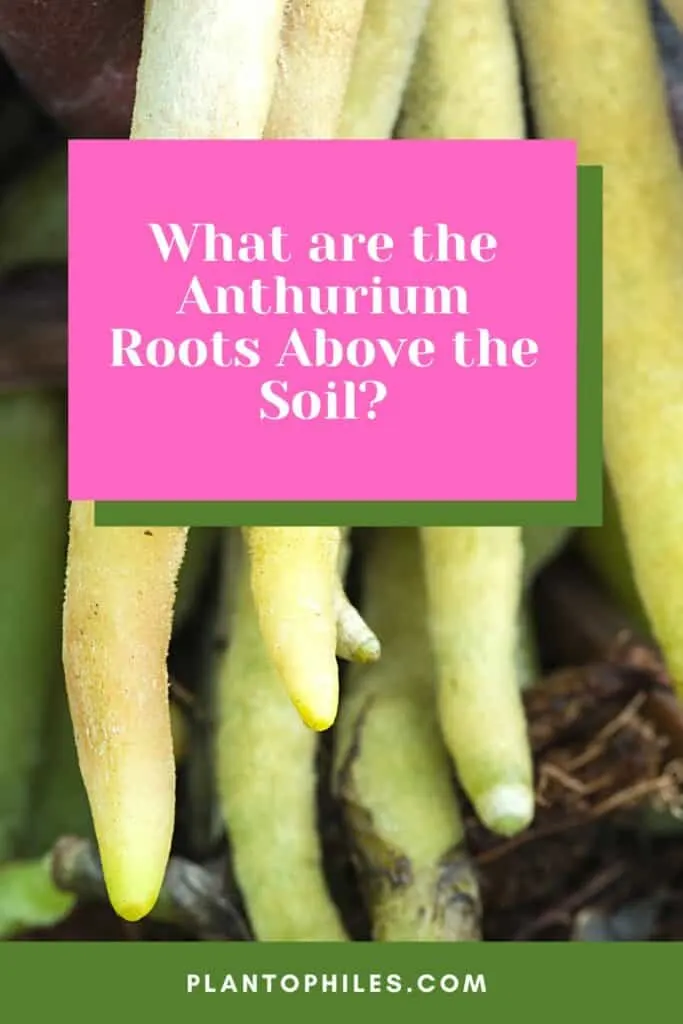
Aerial Roots (Air Roots)
Air roots are essential to attach Anthuriums to objects and other plants. They are adventitious roots. This means that they grow by chance, not by design. The environment impacts when and how the roots grow. If the humidity is high, a lot of aerial roots will grow.

If you see aerial roots, it doesn’t have to mean that your houseplant is root or pot-bound.
It is trying to hold on to other objects or the soil to support its growth.
In tropical forests, hemiepiphytes try to reach the forest floor as soon as possible using aerial roots. Hemiepiohytes only spend a part of their life as epiphytes. The University of Ulm states that these roots are crucial for survival. The need to reach the forest floor quickly. There they take in nutrients and humidity.
If you have a climbing Anthurium, it is important to provide a stake, trellis, or moss pole. The aerial roots will grow into the support as your indoor plant grows taller.
The flower of an Anthurium consists of a spathe or spadix, called an inflorescence.
Why Anthuriums Have Aerial Roots
Anthuriums have aerial roots to hold onto objects and plants. They also grow into the soil and become soil roots.
The better an Anthurium is attacked and stabilized, the bigger the leaves and thicker the stem. It will also mature more quickly and produce more flowers.
Another function of aerial Roots is taking in nutrients and water from the air.
Another benefit of aerial roots is that they help houseplants to remain tight in the pot.
Because Anthurium leaves can get quite large, these indoor plants need to hold onto something using their roots above the ground.
Without aerial roots, it would be very difficult for Anthuriums to reach maturity. A further difficulty would be growing bigger leaves and producing multiple blooms.
How to Make Anthuriums Attach to a Moss Pole
To make Anthurims attach to a moss pole, provide ample air humidity. Wet the moss pole daily using a water sprayer.
Based on my experience caring for Anthurium plants, humidity is the biggest factor in growing aerial roots.
If you can increase the humidity, you will most likely see vigorous aerial root growth.
The aerial root growth increases drastically if you provide humidity above 70%. I usually try to have a humidity between 70 and 80%.
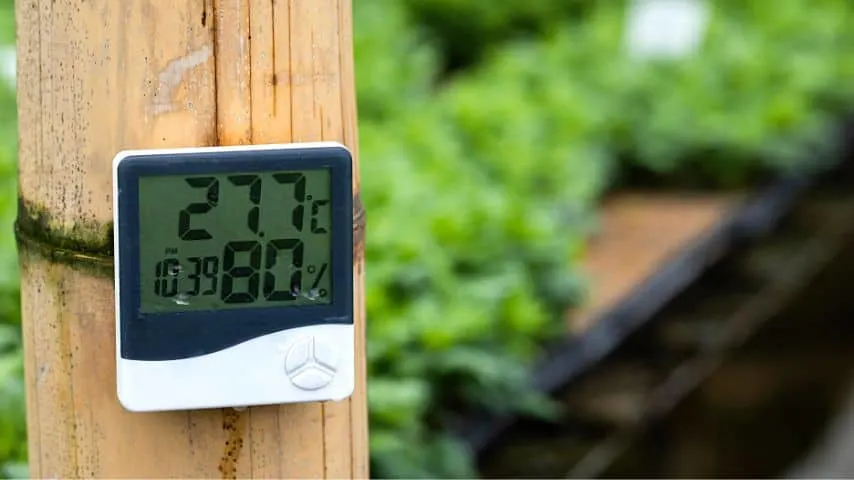
If I keep plants in a container or a terrarium, it can even go up to 100%.
In these conditions, you will have massive root growth.
It will be easy for your plans to attach to other objects, such as moss poles.
How do you produce a lot of humidity?
The best thing you can do is to put your plant in an enclosed container. You can also use a humidifier. The downside of humidifiers is that you have to refill the water weekly. You also have to buy them first.
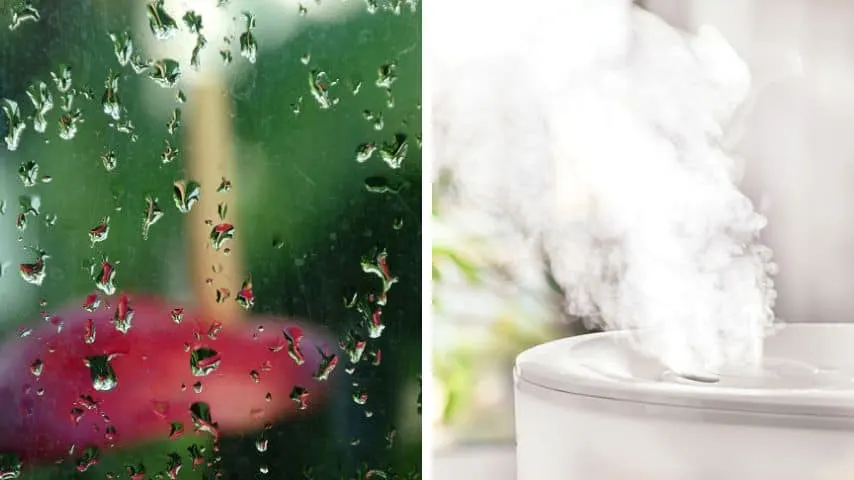
Putting plants closely together is another great way in increasing the environment’s humidity.
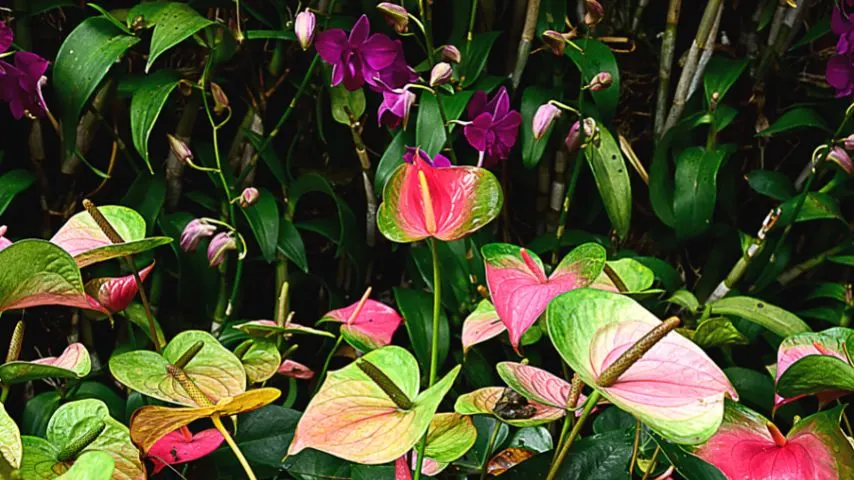
Pebble trays that you put below the plant pot can also be used. Fill it with water. Refill it when empty. It will only slightly increase the humidity surrounding the single plant.
What does not help, based on my experience, is if you are spraying your plants with a spraying bottle.
This way you are only increasing the humidity for a short time. It’s not a sustainable way of increasing humidity.
You also have to ensure that the leaves are not staying too wet for a long time. This results in fungus building up on your plant’s foliage. An example is leaf spots caused by the bacteria Xanthosoma, according to the University of Florida.
The foliage might wilt and die.

Another thing that works great is getting the moss pole humid.
You must wet the moss pole every day to stay humid. Moss dries out quickly indoors.
This way, the aerial roots from your indoor plants will grow into the moss pole.
If the moss pole is not wet at all and quite dry, and the air is not humid, your plants will have a hard time too attached to the pole.
Another thing you can do to help your plants attach is to attach them to the pole or trellis using a cord. There are specific cords available for gardeners you can use.
Attach the stem of your plant to the moss pole. Once it’s close to the most pole, it’s easier for the plant to grow aerial Roots into the pole.
Can You Propagate Anthuriums From Aerial Roots?
You cannot propagate an Anthurium from an aerial root. To propagate an Anthurium plant, you need at least one node. As well as a stem section. Other ways to propagate Anthurium are seeds, by division, and air layering.
However, the aerial roots are a good indication of where the nodes are in most cases. Because usually, the aerial roots grow around the section where the nodes are.
In addition, aerial roots are great when you propagate. Because if you have aerial roots, they can turn into soil roots. They can also turn into water roots. So if your cutting already has a couple of aerial roots, it will grow much quicker into a new plant.
The aerial roots will turn into soil roots once you plant them into the ground.
Do Other Houseplants Aside from Anthuriums Have Aerial Roots?
Other houseplants also produce aerial roots. They are very common in the Araceae family of plants. This is the family of Aroids. A lot of these plants are epiphytes.
A good example is the Philodendron plants. They often produce aerial roots.
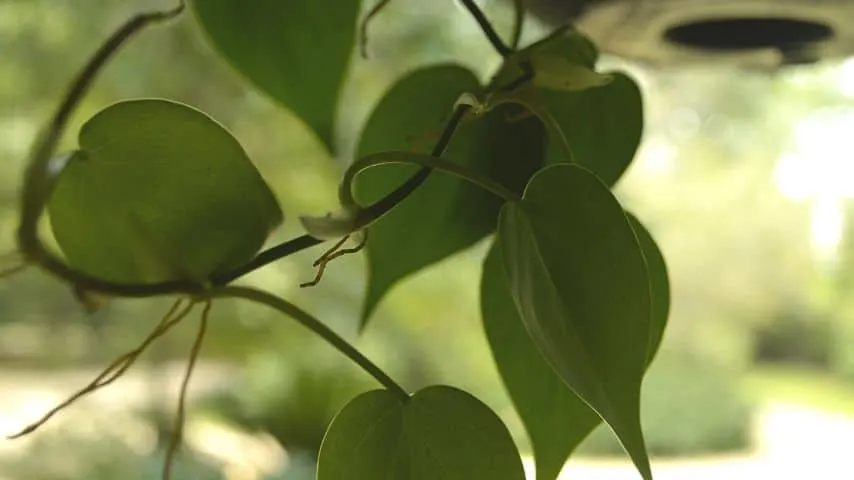
The Monstera genus also produces air roots and orchids from the Orchidaceae family.
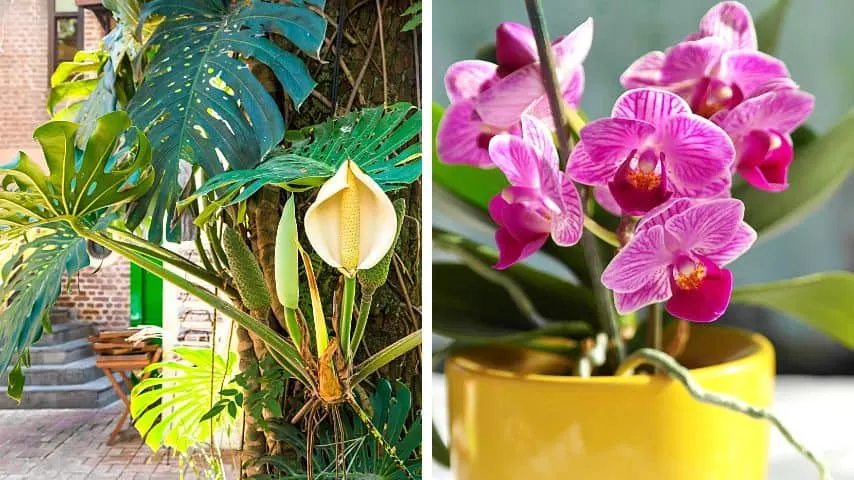
What is a Rootbound Anthurium?
A rootbound Anthurium is a plant with roots from its drainage holes. In addition, rootbound is whenever roots cannot develop. Some barriers, such as a pot, obstruct them.
Do Anthuriums Like to be Rootbound?
Anthuriums dislike being root bound. Because once a plant is rootbound, it cannot further expand.
It will produce smaller leaves. It will have stunted growth, and also it will not bloom readily.
What to Do with a Rootbound Anthurium?
If you have a rootbound Anthurium plant, it’s best to take it out of its pot and repot it. Check the soil and ensure there is still enough in its pot.
Add some more soil if it isn’t the case. But first, take your Anthurium out of its old pot and put it in a bigger one.
Always select a pot that is only 1-2 sizes bigger than the previous one used. A pot that is way too big will make it difficult to water your plant. You will most likely end up with root rot.
So once you take the plant out of the pot, take a bigger pot. Add some potting soil to the pot bottom. Then put your indoor plant into the pot.
Ensure to add sufficient potting mix around the roots. Your plant can now expand and grow roots. It is no longer rootbound.
How to Repot an Anthurium Plant (Repotting Anthurium)
Repotting Anthurium is easy. These tropical plants need to be repotted every 1-2 years.
Anthurium Care
Anthurium plant care is easy. There are more than 1000 species of Anthurium, according to Florida University. You can grow an Anthurium plant in your home.
Growing Anthurium plants does not need any special equipment. But a humidifier will help to provide increased humidity.
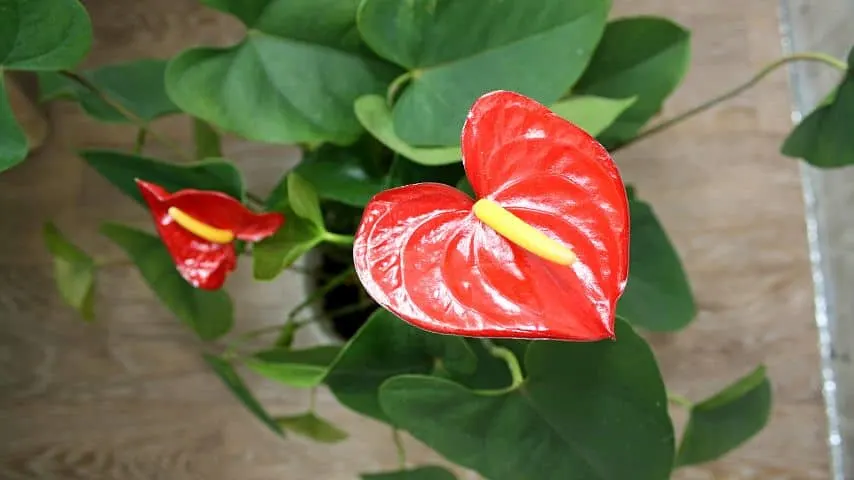
Light
Provide bright indirect light.
Watering
Water every 5-7 days. Keep the soil slightly humid. Water your Anthurium from the top or bottom.
Potting Soil
Use coarse, chunky soil. Peat, perlite. moss, charcoal. Anthurium potting mix needs to be well-draining.
Temperature
The ideal temperature is 77-92°F (25-32°C).
Humidity
A humidity of 70 to 80% is optimal.
Fertilizer
Fertilize once a month in spring and summer. Reduce fertilization in autumn and winter.
Repotting
Repot every two years into a new pot. Once roots come out of the pot it is time to repot.
Placement
Place the Anthurium in an eastern- or western-facing window. Place the plant away from drafty windows.
Propagation
Propagate using stem cuttings, separation, or seeds. You can also air-layer these houseplants.
Get a full care guide here.
Conclusion to What are the Anthurium Roots Above the Soil
The Anthurium roots above the soil are aerial roots. They are natural and emerge spontaneously. Anthuriums use these roots to attach to other plants and objects. They also take in nutrients and humidity using these roots.

Daniel has been a plant enthusiast for over 20 years. He owns hundreds of houseplants and prepares for the chili growing seasons yearly with great anticipation. His favorite plants are plant species in the Araceae family, such as Monstera, Philodendron, and Anthurium. He also loves gardening and is growing hot peppers, tomatoes, and many more vegetables.


